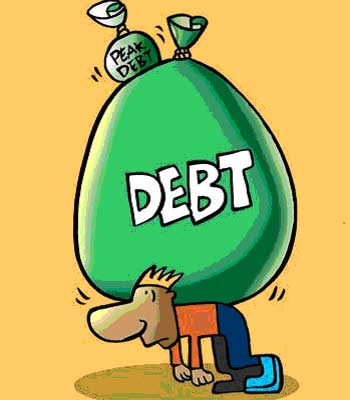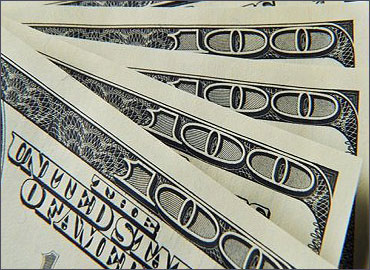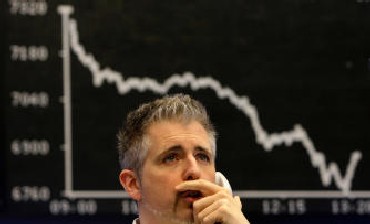
"Do Hindi films have a song for almost every occasion?" I wondered, as the radio played the old number Aao twist karen from the movie Bhoot Bangla sung by Manna Dey.
"Doesn't this song make you feel like dancing," said the roommate.
"Yes, it does," I replied. "And it even goes with the occasion."
"What occasion?" she asked.
"Twist is now back in fashion!"
"The dance?" she asked. "The funny moves that Bollywood film starts of the sixties and the early seventies used to make when it came to dancing?"
"No. Looks like you haven't been following the news. The United States Federal Reserve, the US central bank, has announced a new $400-billion rescue plan, which is being called the 'twist'."
"The twist, after the dance, you mean?"
"Yeah, after the dance."
"What's the logic?" she asked.
"Well, the idea is to twist the yield curve."
"And what is a yield curve?"
. . .

"Governments sell financial securities of various maturities like 1 year, 5 years, 10 years, 30 years, etc, to finance their fiscal deficit. Fiscal deficit is the difference between what the governments earns and spends. These financial securities are referred to as bonds and the returns that these bonds offer are referred to as yield," I explained.
"So far so good," she butted in like she usually does.
"When the yields across various tenures like 1 year, 5 years, 10 years and 30 years are mapped in the form of a graph, what we get is a yield curve."
"Interesting. So how do we twist the yield curve?"
"The US Fed plans to sell bonds maturing in three years or less, and use the money they get by doing that to buy existing bonds in the market which have a remaining maturity period between six to 30 years."
"And what will that do?"
. . .

"When the US Federal Reserve decided to buy bonds maturing in six to 30 years, the demand for these bonds will go up."
"Yes . . ."
"More demand would mean that the price of these bonds will go up."
"Okay."
"So earlier you could have bought a bond that paid an interest of, let's say, 2.5 per cent for $100. After the US Fed intervenes and buys bonds, the price of this bond goes up to $101. So now this bond is paying an interest of $2.5 every year, but its price is $101. So the return on this bond has fallen. Is that clear?" I asked.
"Yes, it is."
"So the return on the bond has fallen, which means that the yield curve has changed from as it was plotted earlier, i.e. it has been twisted."
"But I still can't understand, why the name 'twist'?"
. . .

"Well, the first time the US tried such a thing was way back in 1961, when John F Kennedy was the American President. Back then twist was a new dance craze sparked off by singer Chubby Checker. And so the name!"
"That's some link! But why are they doing this?"
"Well, the rate of return or the yield on the government bond sets the tone for interest rates that banks and other financial institutions charge on loans to individuals as well as businesses. So if this operation brings down the yields on government bonds, as it is theoretically expected to, the interest rates will also fall."
"And how will that help?"
"In various ways. Lower interest rates will encourage people to borrow more and spend that money. When the money is spent it will benefit businesses, which in turn will mean more taxes for the government. For an economy which has an official unemployment rate of nearly 9 per cent, it will also mean creation of more jobs as businesses do well."
"Isn't everything so nice and easy in theory!"
. . .

"Yes, it is. In fact, in theory it would also mean lower EMIs (equated monthly instalments) for people who have lots of loans to pay off. Lower EMIs would mean higher savings and thus more money to spend, which would lead to a higher growth rate for the economy."
"But all that is in theory!" she remarked again.
"Yeah, you are right. Eric Swanson, an economist, studied the first twist move of 1961. And he came to the conclusion that it hardly had any impact on bond yields. The yields went down by a miniscule 0.15%. So if yields don't go down, interest rates don't go down, and the entire economic theory we just discussed goes for a toss."
"So economic theory goes for a toss again."
"The other thing is that the interest rates across the maturity spectrum are already at extremely low levels. The interest rate being offered on a 10-year government bond in the US has fallen to 1.9% already, from 3.2% in July. Also US companies are flush with cash right now, and given the sad demand scenario there is really no incentive for them to borrow money and go about expanding their business."
"Sure it doesn't make sense."
. . .

"And more than anything, the US consumer is now busy paying off all the loans that he has accumulated over the years. So he really isn't in the mood to borrow more. The household debt in the US fell by 0.6% in the second quarter of the year showing that the US consumer is actually paying off the accumulated debt. Also the savings rate in the US reached around 5% in July 2011. Just before the financial crisis started the savings rate was even in negative territory for a while, i.e. people were spending more than what they were earning."
"So all that is changing now?" she asked.
"It looks like that. Also the biggest thing is that with an employment rate of 9%, everybody knows somebody who has lost his job. Given that the levels of insecurity are very high and in this environment people are more likely to save money for a rainy day, than go out there and spend it or for that matter borrow it and spend it."
"Hmmm. So the 'twist' isn't working!"
. . .

"Yes. In fact, there is another school of thought at work. The government wants the interest rates to fall to such low levels that people do not invest money with banks and invest that money in the stock market, ensuring that the stock market indices go up, meaning higher returns. With higher returns people feel wealthy and hence go out and spend money, which in turn benefits the economy."
"But that's again just a theory?"
"Yes, it is. The stock markets all over the world clearly aren't buying this theory and have fallen since the twist announcement was made on Wednesday."
"So what does that leave us with?" she asked.
"The song!" I replied. "And the dance. Aao twist karen . . . !"